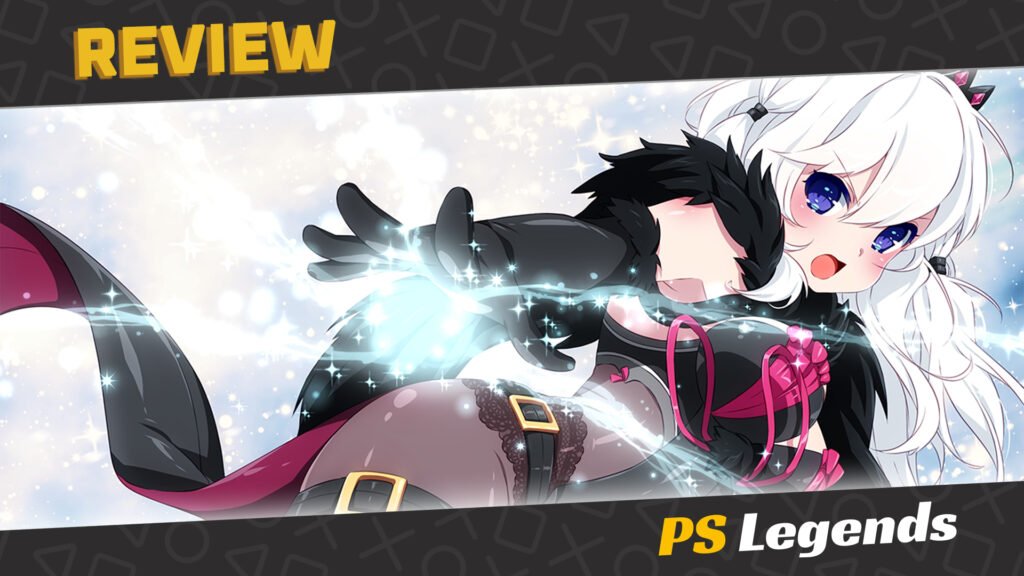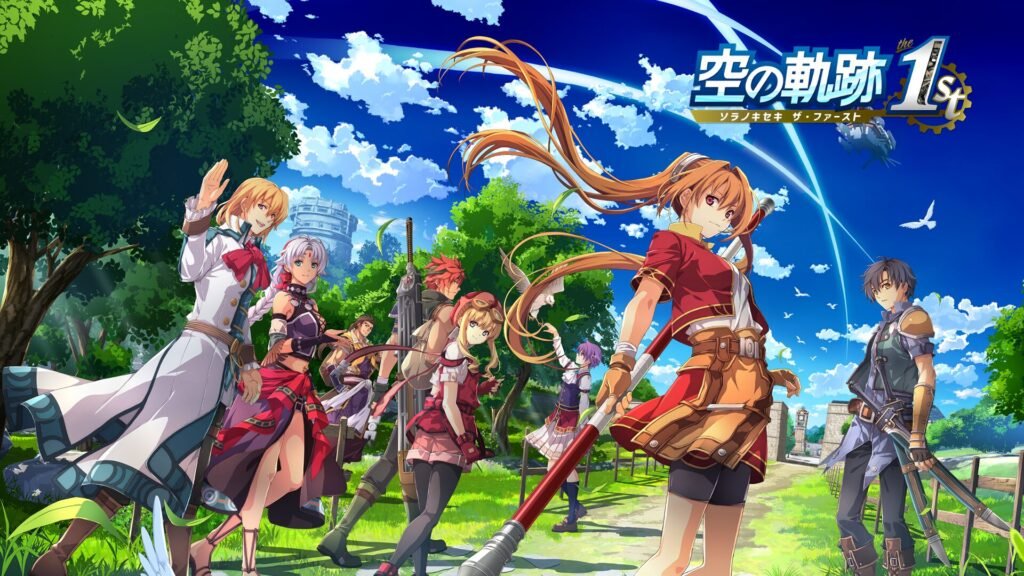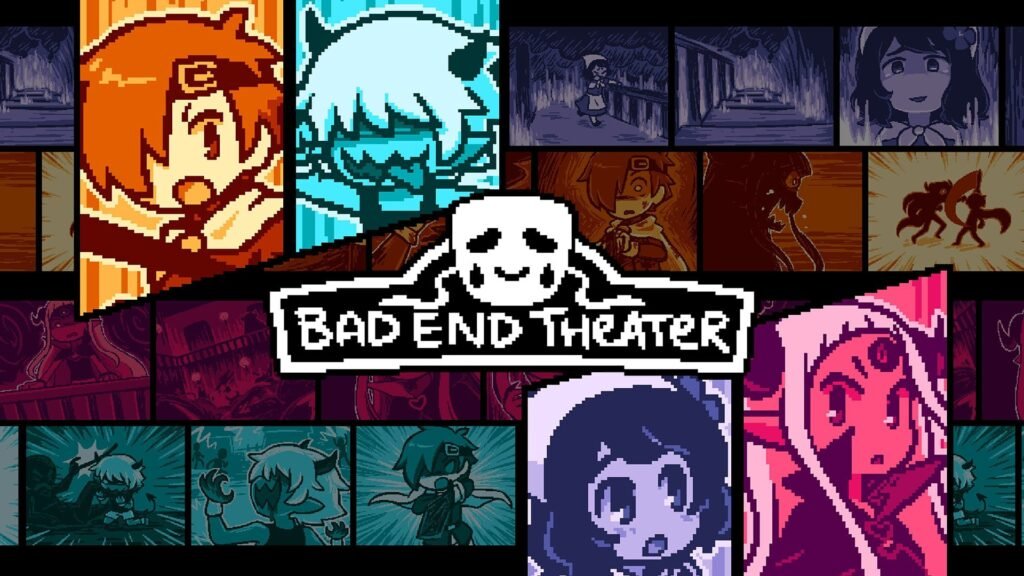One staple in the Atelier series is that the games usually come in trilogies or duologies. After Rorona, Atelier Totori: The Adventurer of Arland DX brings the second entry in the Arland franchise to PlayStation 4 (and to PS5 through retrocompatibility). This game is a drastic departure from its predecessor by exploring a loose deadline system for its challenges.
Leaving the Nest for Closure
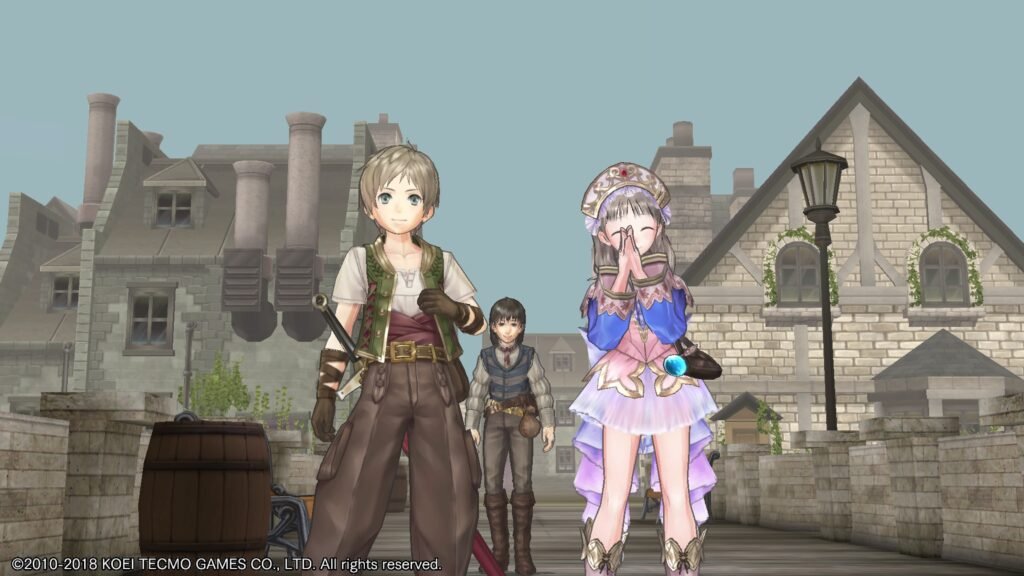
Atelier Totori tells the story of Totoori Helmold, a young girl whose nickname is Totori. Though she may seem like a simple kid at first, the truth is that Totori is an alchemist.
Ever since Rorona from the previous game went to her hometown, the kid started taking to the cauldron. As an apprentice to the synthesis arts, she can make unique items and maybe one day become an impressive master of the trade.

However, this skill of hers is but a stepping stone to her real dream. Totori wants to become an adventurer and to find her missing mother. Her atelier and synthesis skills are just a way to accomplish this goal and become more usual than her meek self would if she depended on strength alone.
Adventurers are a group of people under the sanction of the Arland government. Their tasks revolve around exploring the vast land to deal with monsters and general requests from the populace.
Following a rank system, the government classifies adventurers according to their accomplishments. Totori’s mother was one of the best there ever was but she went missing one day. While everyone treats it as if she died, Totori hopes to one day find her safe and well.
The Deadline System in Atelier Totori
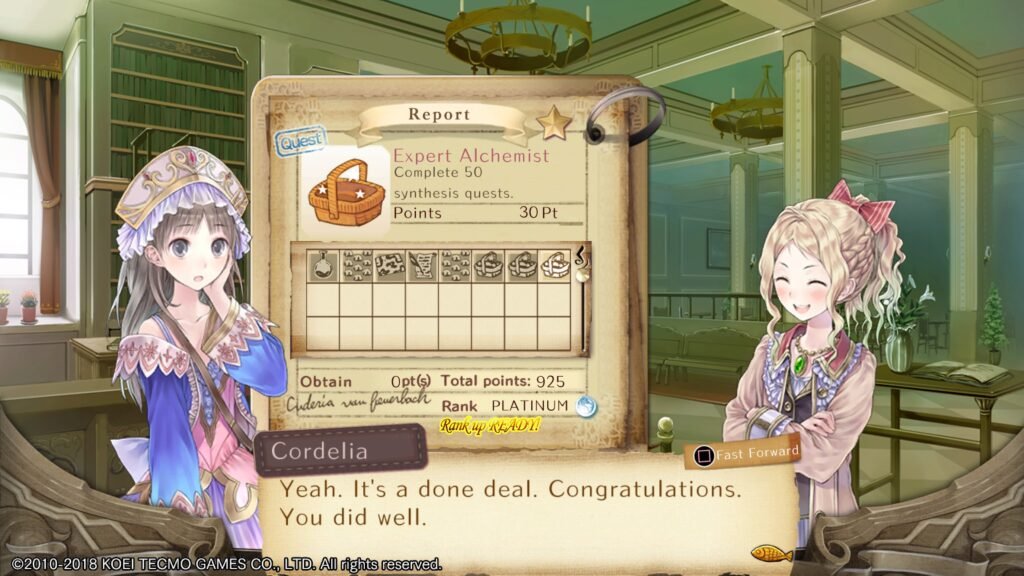
One important aspect of the Atelier series are the deadlines. This system defines a lot of elements in the games, drastically altering the feeling of each entry in the franchise.
For Atelier Totori, we have a longterm deadline. What this means is that we have a major goal: becoming a high-tier adventurer. Otherwise, the Arland officials will revoke our license in three years.
However, in the meantime, you’re totally free to do whatever you want. You can focus entirely on synthesizing new items for some time before exploring or do the opposite.
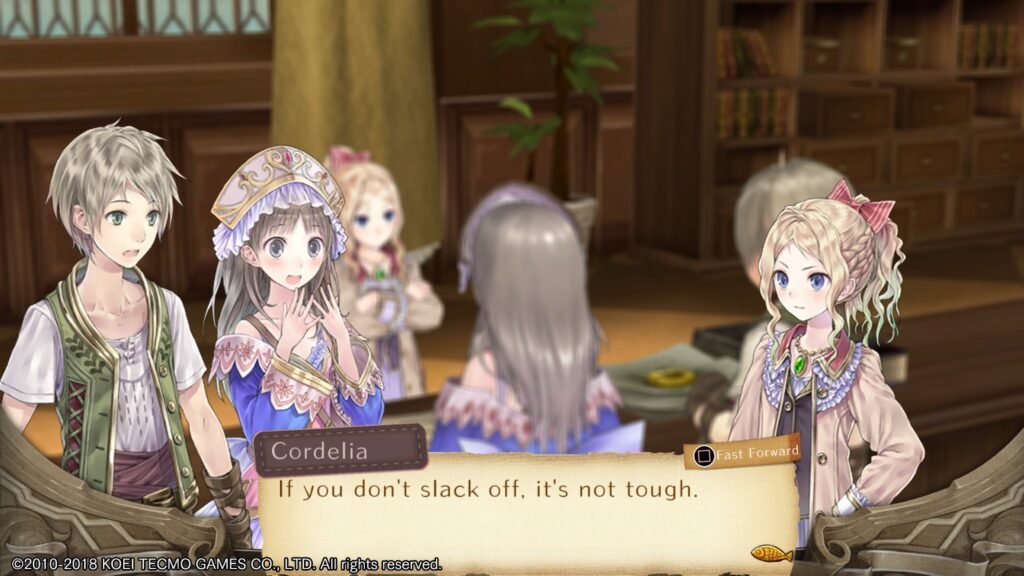
This lax approach means you can relax for a while and enjoy the mechanics but it may come back to bite you. While Rorona’s strict deadlines may feel overwhelming to some players, lazy players may just suffer more with Totori once everything comes tumbling down for the time they wasted.
What the player can use as a guideline is the rank system. Instead of leaving it all to the final moments, the player should go to Arland to evolve their current standing. Traveling to Arland costs a lot of days but better ranks means more areas and items available.
The player can rank up once they got enough points from handling various missions in the game’s menu. Synthesizing new items, fighting enemies, handling quests, and even spending days exploring are all accounted for in this system, so everything you do can be meaningful.
The Usual Loop
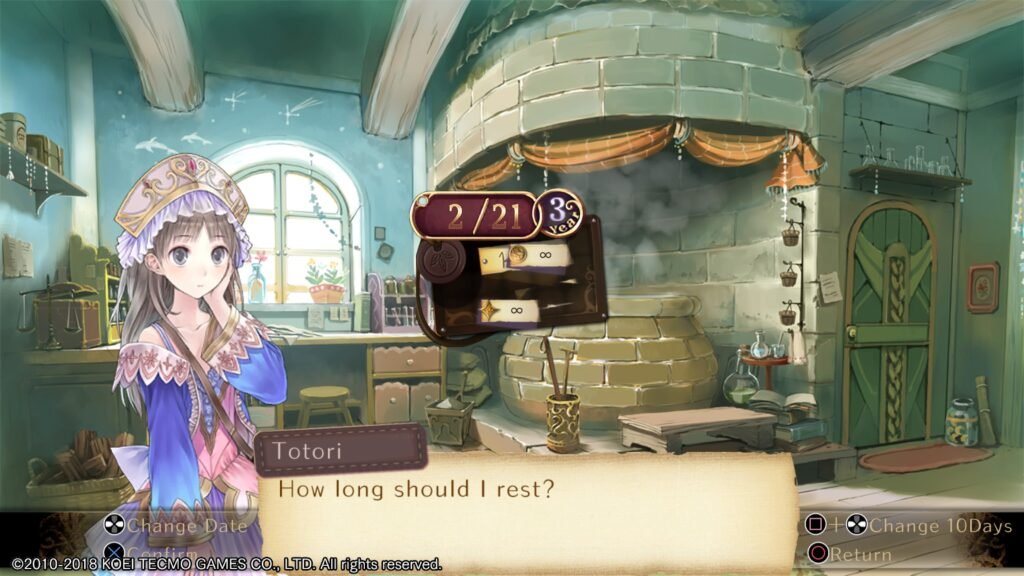
When it comes to Atelier, the game loops usually depend on the same elements. As players have to synthesize items, they need to find materials by exploring the world or buying them on stores. However, exploration will lead you to dangerous areas, forcing you to fight monsters.
Just like Atelier Rorona, Totori has a calendar system, which means actions may cost time. As such, you need to properly evaluate if going to the near forest to gather some ingredients and fight slimes will be an effective use of your time or not.
Totori has two individual levels: an adventurer one tied to her fighting abilities, and a synthesis ones for alchemy. The former goes up by fighting monsters while the latter gets better by making complex items.
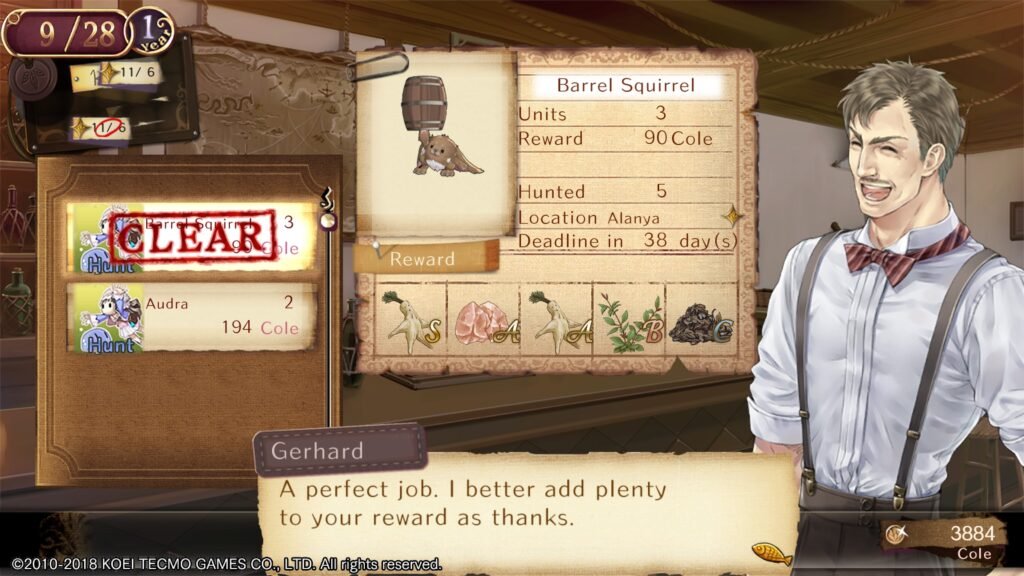
Another way the game rewards players is the quest system. By making or gathering specific items and fighting enemies, you can get money. The system is also a good way to gain explorer points.
Quests offer shorter deadlines but most of the time they are attainable goals for short term. With cash in hand, you can buy recipe books, which improve your pool of item creation options.
In the end, everything is connected in a simple but engaging loop. This is an essential aspect that makes the Atelier games come together as much more than the sum of its parts, and Totori is no exception.
Days for Exploration
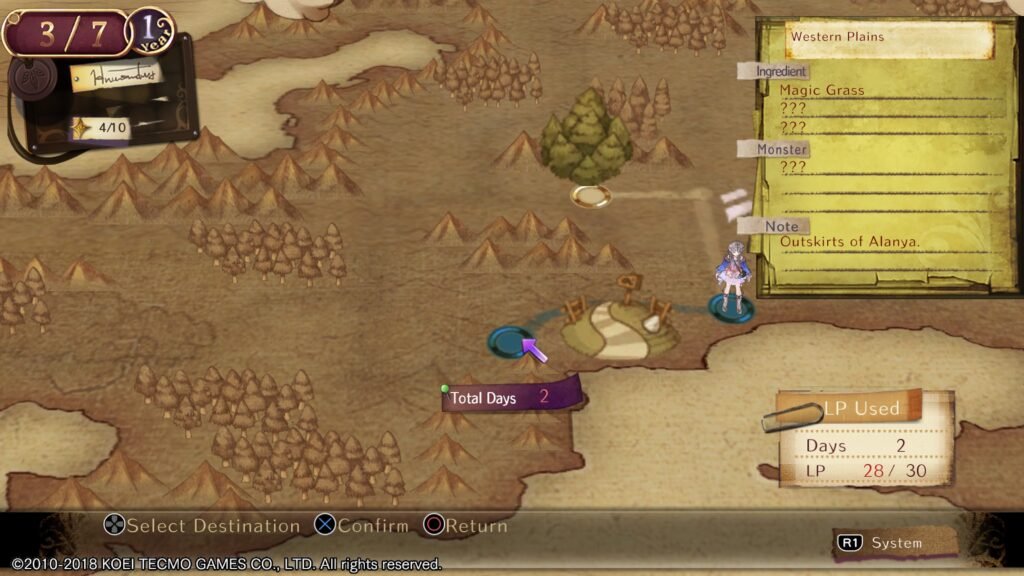
Once you leave town, you can go to various spots. Initially, Totori comes from the small village of Alanya and can only explore the areas around it which are relatively safe.
Going beyond the established limits depends on ranking up, opening up more options. Each area has multiple gathering spots and may have some enemies which the player can fight against or run from.
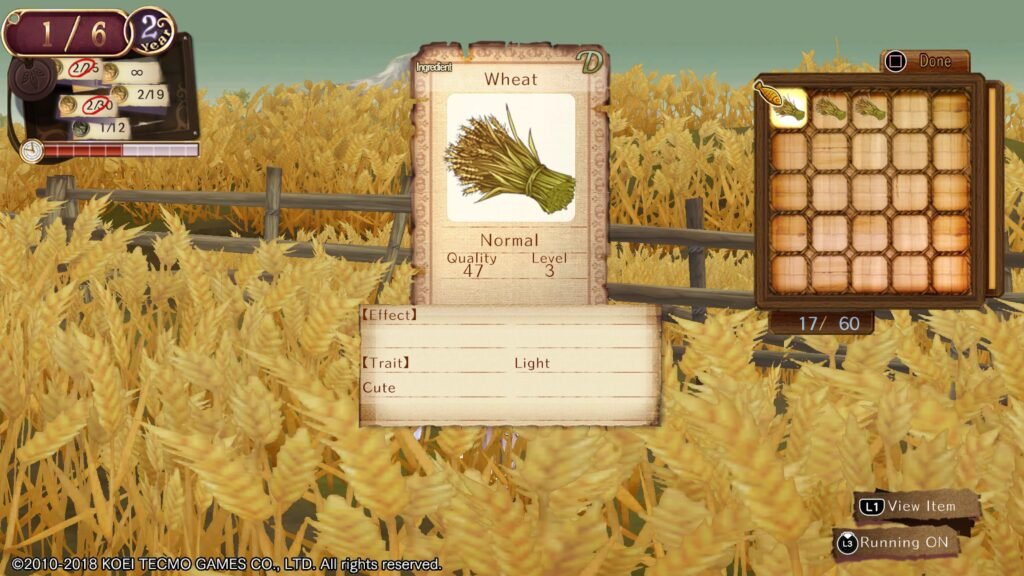
It takes some in-game days to get to each area, which are self-contained rooms in nature. Players can choose to enter a place or just move to an area further along. Before entering somewhere, you can see the materials and enemies available there to plan every step of the way.
Gathering items and battling will take time. However, even if you don’t do anything and immediately leave an area, you’ll miss on an extra day so proper time management is important.
Turn-Based Simpleness
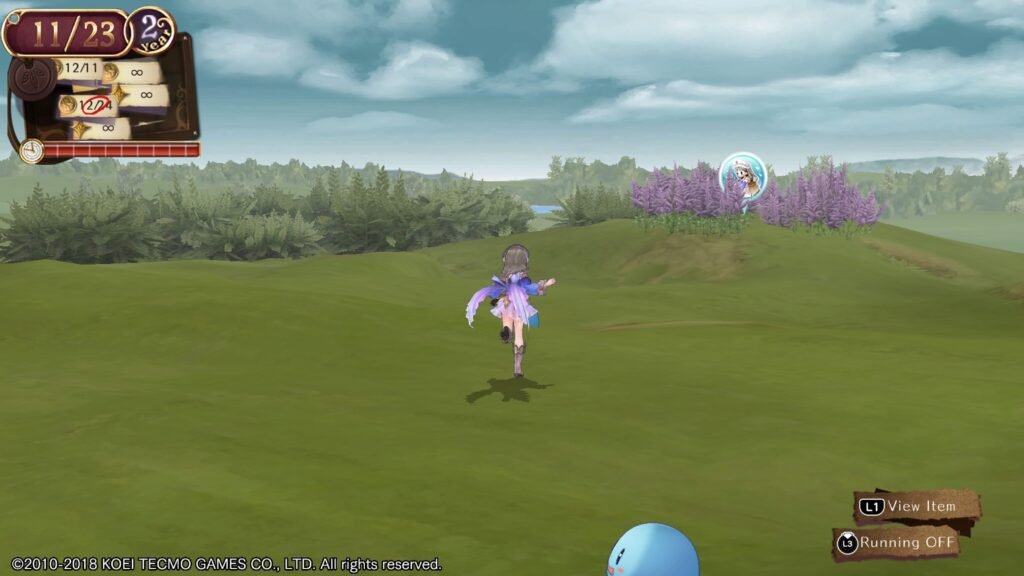
Unlike classic random battle RPGs, Atelier Totori allows you to see enemies in the field. Thanks to that, you can choose between avoiding them entirely to avoid spending time or fighting them head-on. If the player character and the enemy touch, a battle starts, but some minibosses can also do it once you reach their range.
Battles follow a simple turn-based system in which character speed defines turn order. Once one of your allies is next on the timeline, you can pick between attack, skills, blocks and fleeing. As alchemists, Totori and Rorona can also use items that the player created through synthesis.
While the skillsets for the characters are very limited, items are a great way to get more variety and control. Ranging from destructive bombs to restorative items with buffs and debuffs, these resources make your time tinkering in the workshop extra valuable.
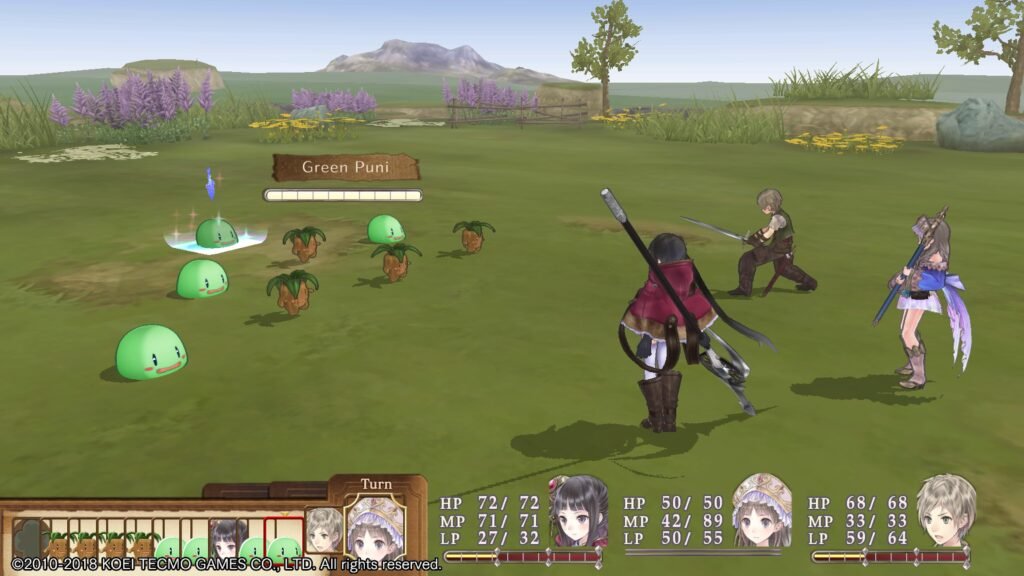
Unfortunately, the base combat experience can feel too restrictive for the genre and the series has considerably evolved since then. But even if you compare this to the PS2 titles like Atelier Iris 3 or the Mana Khemia series, battles may feel barebones.
That doesn’t mean it can’t be challenging, as enemies can be quite tricky and strong enough that not having items will spell your doom. However, RPG fans who prefer intricate combat systems will feel it lacks unique elements and more variety in move pools.
The magic of alchemy
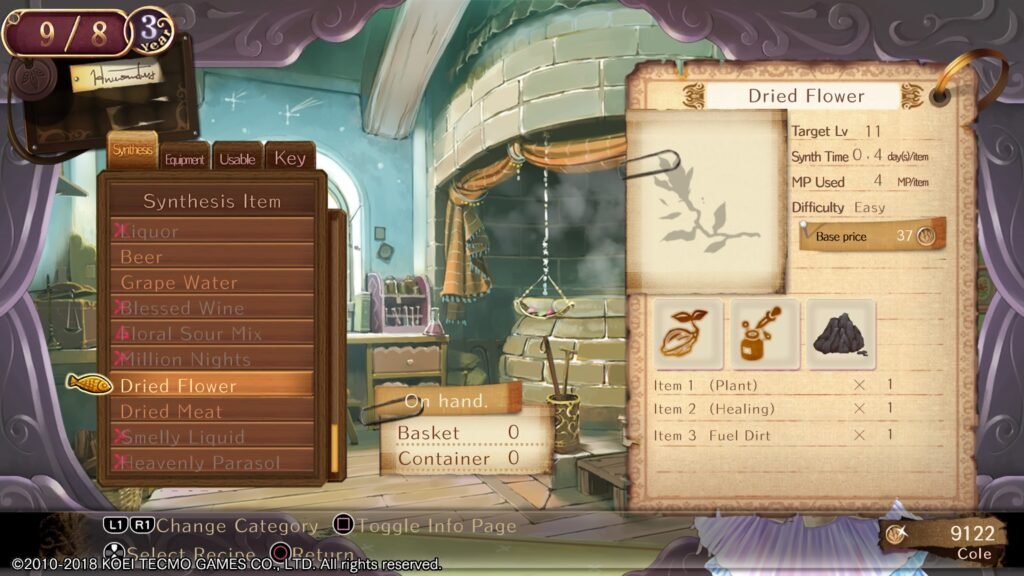
The big staple of the franchise, alchemy, is an item crafting system which the player must use so Totori’s skill gets better. Making an item depends on having the recipe for it and they’re all graded in different levels.
The higher the level of an item, the harder it is to make. If Totori is too many levels below the target item, even if she has the proper materials, the synthesis is prone to fail.
As such, it’s important to build up experience by creating items of lower difficulties before tackling complex ones. Totori’s classification of “easy” and “hard” will adapt as she levels up, making it ever more probable to make it until the point there’s no risk anymore.
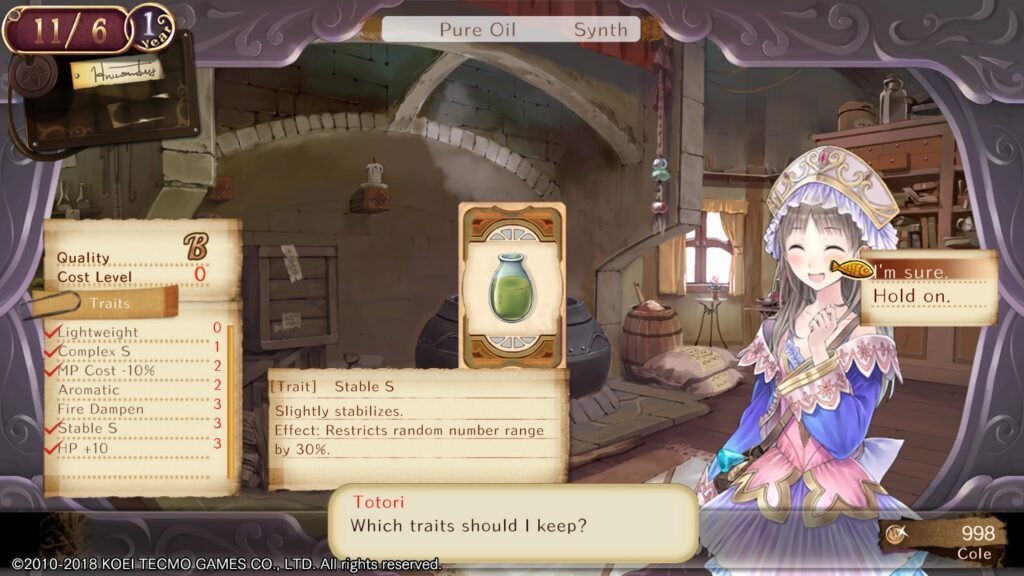
Depending on the items you use, you can make a better quality item or add various traits to it. The choices can lead to vastly different effects in the very same medicine or bomb. For instance, you can make them cheaper or more expensive, but there can also be side effects that impact battle usage.
At first, it may be complicated to make good items but over time you’ll have the chance to get better materials and to properly understand how they impact production. By using the cauldron often, it’s not only Totori who levels up but the players themselves as long as they experiment and observe the results carefully.
Slice of Life with Jam
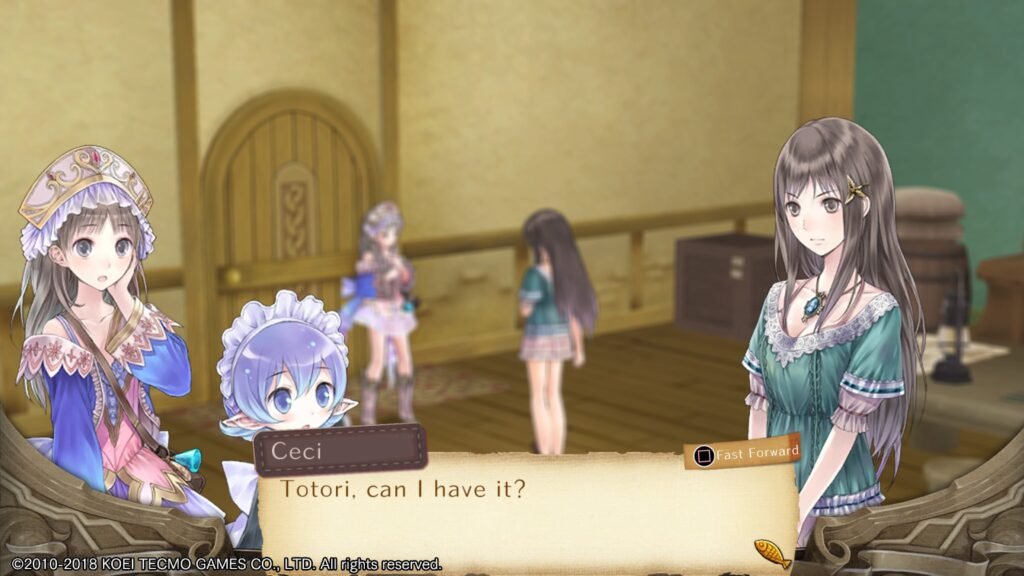
Another aspect that I’d be remiss not to mention is how much the game thrives on its slice of life elements. Atelier is a series about “ordinary people” who happen to know alchemy, and how trying their hand at it becomes an important part of their daily lives.
For the Arland series, there’s a specific sort of appeal in how characters feel alive. Instead of cartoonish depictions or stereotypes, we get people with a wide range of expressions. While Totori may be a dork at times, she is smart at other times, and none of it feels out of character.
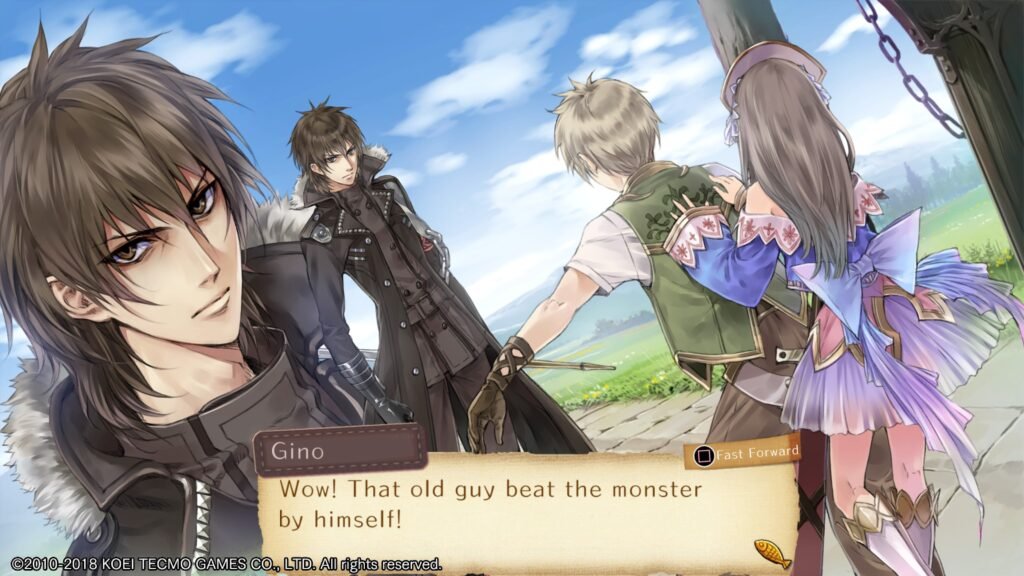
Character interactions drive this point further, as we have situations like Ceci, Totori’s older sister, trying to act motherly. Ceci and Totori love each other but siblings quarrel and have to deal with each other’s personalities clashing.
By using characters more often, we get a good look at them, little by little unraveling their backstories. This leads to players usually getting to experience their favorite characters’ storylines first because they’re more often in your team. It’s a clever system that adapts the narrative focus to your preferences behind the scenes.
The Scars of Time
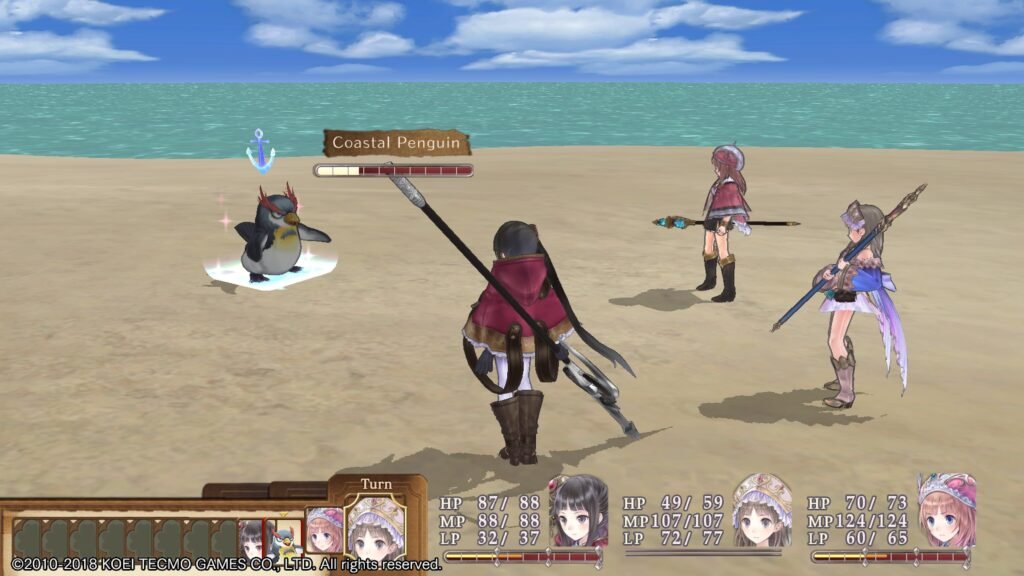
The biggest point against Atelier Totori DX is the fact that the game hardly evolves from its previous iterations. Just like Rorona before it, there’s little improvement here from its previous Plus edition, with only the fast-forward button for exploration and battles as a significant addition.
For this game, however, what it means is that we end up facing a downgrade in features from Rorona DX. As Rorona’s rerelease is based on a remake, it had time to add quality of life features, and some of those are not available here as Totori’s game was ported from PS3 to Vita and then to PS4 instead.
For instance, Rorona DX has a log for the dialogues, better menu navigation, and some information, like how likely it is to fail a Synthesis or the meaning of each Trait, is more clearly depicted. The battle and alchemy systems in Rorona were also tweaked while Totori’s remain the same. With that in mind, it can feel like a small but noticeable downgrade at times.
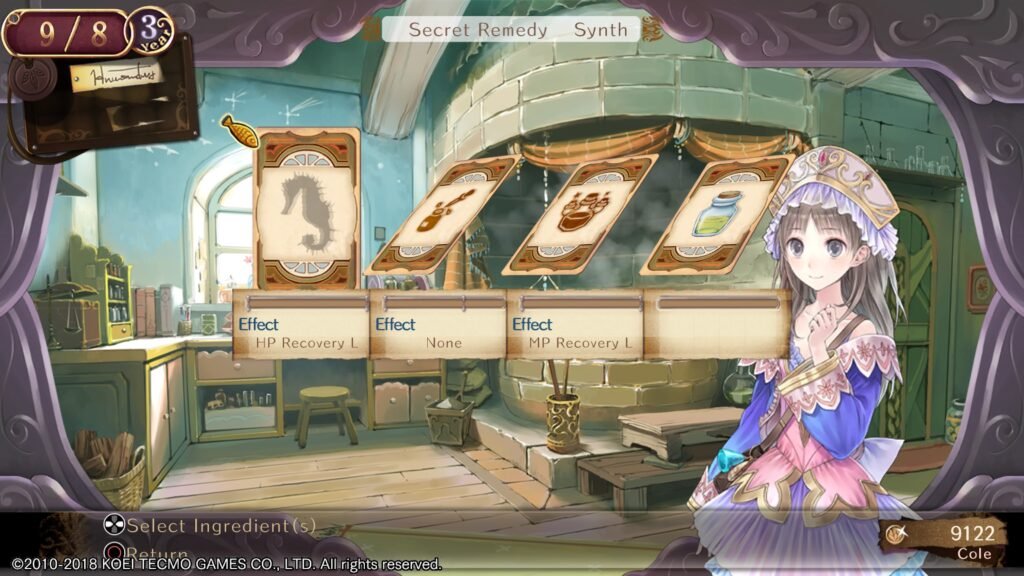
It’s a shame as the trilogy’s rerelease was the perfect chance to make them all even in those quality of life features. With those out of the way, they could all stand as unique projects that explore different formats but are all interesting.
Another element that could have more improved in this release is the graphics. The textures and aliasing can make it feel dated in a way that should have been fixed for a release in a modern system. It works but the game deserved a better treatment in this regard.
An Endearing Adventure
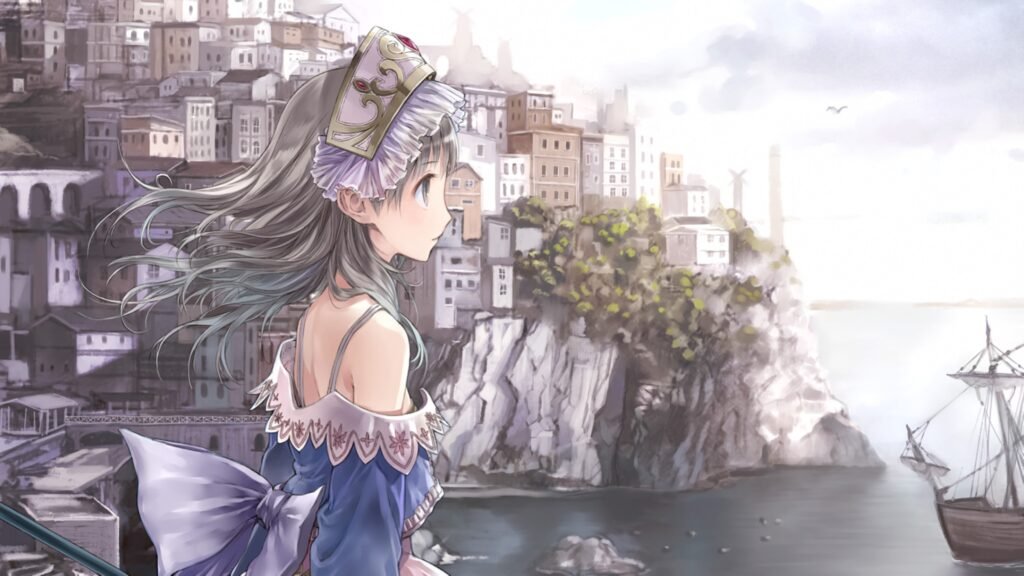
Atelier Totori: The Adventurer of Arland DX is an interesting take for the series and brings with it the seed of exploring other venues in the deadline system. The game could have used some more polish and quality of life features to make it a less noticeable downgrade from Rorona but it’s a solid entry in the long-running series.
Joys
- A rewarding, satisfying game loop based on continuous exploration, synthesis and combat;
- In-depth synthesis system that allows players to customize the items they make;
- A charming world explored through funny slice of life moments;
- The mission system generates constant growth goals.
Cons
- Quality of life elements are a downgrade when it’s played after Rorona Plus;
- A limited turn-based system with Totori’s items making up for the small movesets and little malleability;
- Some textures and aliasing elements make it feel like it could use an improvement in the graphical department.

